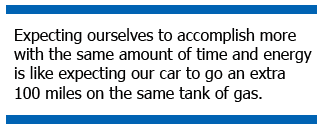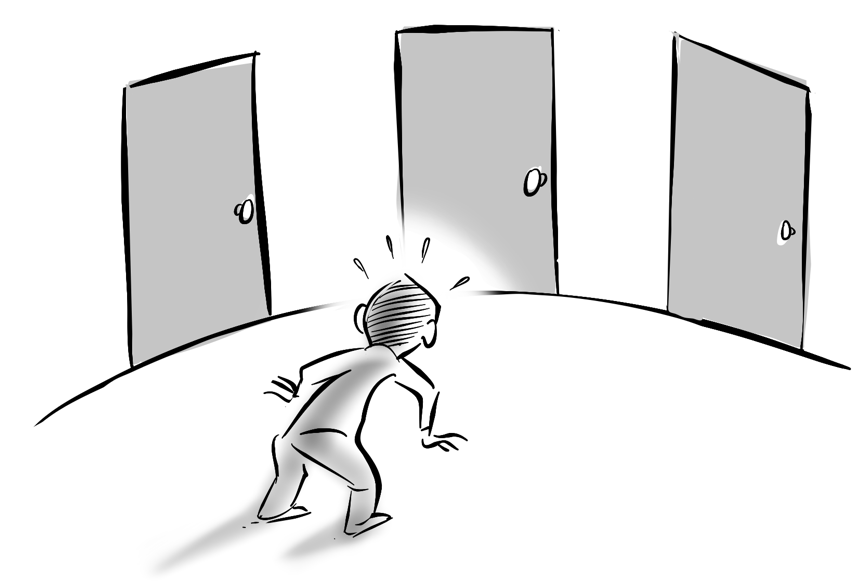When it comes to new year’s resolutions, we often start out with enthusiasm and resolve, only to find it fading within a few short months. One of the reasons for this is we focus too much on the end goal, for example “lose 10 pounds”, “organize our garage”, or “run 5 miles”. When we focus so much on our end goals, we often miss out on two very important things.
The Journey
One of my goals is to scan my photos and organize them into online albums, something that my family will be able to share in the future. However, when I think about doing it, I feel overwhelmed. There are so many photos, this will take hours. When I do manage to get started, I feel impatient with the process and only satisfied if I complete an album.
When I focus on the goal of finished photo albums, I miss out on the journey of looking through the photos, enjoying them, and reflecting on the time they were taken. Without those pleasures, my enthusiasm for the project fades, and I’m running only on grim resolve.
Committing to the goal of your new resolution means committing to the journey as well. If the trip to get where you want to go sounds like a grind, perhaps there is a way to get there that inspires you as well. To help you find that inspiration, ask yourself, what are the personal values that my journey might honor?
Personal Values
In my case, there are several values that might inspire me to be more present for my journey with the photo albums. Fun, creativity, and love come to mind. And when I feel the urge to keep going “just to get it done” I might turn to other values like flexibility, self-care and patience. Practicing my personal values is what keeps me coming back again and again.
To live a life of value, we must allow our values to inform how we live. In the busyness of our lives, it’s easy to lose track of what we value, and this year is a wonderful time to remind ourselves what they are.
Here is a list of core human values. When you think of this next year, what values would you like to live by?
SELF-ACCEPTANCE GROWTH OPENNESS CREATIVITY SPIRITUALITY
FUN/PLEASURE RESPONSIBILITY AUTHENTICITY COMMITMENT RESILIENCE
ADVENTURE HEALTH HONESTY SELF-EXPRESSION COMPASSION LOVE
FLEXIBILITY HUMOR PRESENCE/MINDFULNESS COURAGE INDEPENDENCE
PEACE HONOR TRUST SPONTANEITY FORGIVENESS CONNECTION PLAY FLOW
- Pick three to five that you really resonate with. Write them down.
- How do these values tie into your goals for 2021?
I would recommend writing your values down somewhere that you can be reminded of them. We so often lose sight of what is truly important to us.
Resolving to live by our values can motivate us to reach or goals, but more importantly, they help us appreciate the journey. It is the journey, not the destination, where most of life takes place.
Values List PDF
 We could all us an extra boost of can-do! Here, experts share easy ways to do hard things and increase your joy, resilience, and well-being. Read more here.
We could all us an extra boost of can-do! Here, experts share easy ways to do hard things and increase your joy, resilience, and well-being. Read more here. 







Recent Comments